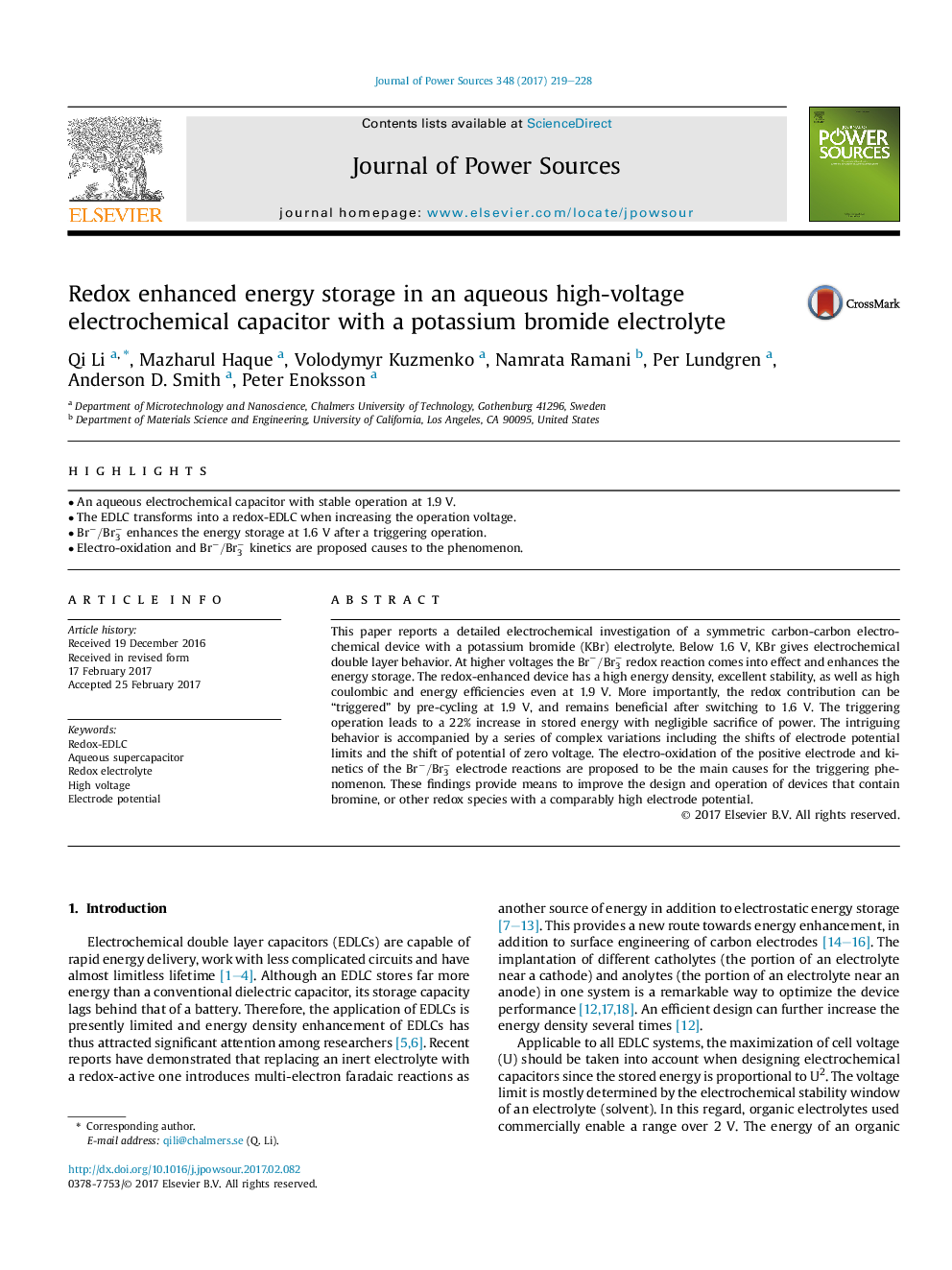| Article ID | Journal | Published Year | Pages | File Type |
|---|---|---|---|---|
| 5149514 | Journal of Power Sources | 2017 | 10 Pages |
Abstract
This paper reports a detailed electrochemical investigation of a symmetric carbon-carbon electrochemical device with a potassium bromide (KBr) electrolyte. Below 1.6Â V, KBr gives electrochemical double layer behavior. At higher voltages the Brâ/Br3â redox reaction comes into effect and enhances the energy storage. The redox-enhanced device has a high energy density, excellent stability, as well as high coulombic and energy efficiencies even at 1.9Â V. More importantly, the redox contribution can be “triggered” by pre-cycling at 1.9Â V, and remains beneficial after switching to 1.6Â V. The triggering operation leads to a 22% increase in stored energy with negligible sacrifice of power. The intriguing behavior is accompanied by a series of complex variations including the shifts of electrode potential limits and the shift of potential of zero voltage. The electro-oxidation of the positive electrode and kinetics of the Brâ/Br3â electrode reactions are proposed to be the main causes for the triggering phenomenon. These findings provide means to improve the design and operation of devices that contain bromine, or other redox species with a comparably high electrode potential.
Related Topics
Physical Sciences and Engineering
Chemistry
Electrochemistry
Authors
Qi Li, Mazharul Haque, Volodymyr Kuzmenko, Namrata Ramani, Per Lundgren, Anderson D. Smith, Peter Enoksson,
